Butter is a staple in kitchens around the world. It is known for its rich flavor and creamy texture, which enhances everything from morning toast to gourmet sauces.
Butter consumers in Southeast Asia are expected to reach up to 16.3m users by 2029, as people recognize its crucial role in cooking and baking.
From the traditional types of butter used in everyday recipes to specialty butter that adds unique flavors, this guide will help you pick the best butter for every dish. Discover the various popular butter types and learn how to use them in your favorite recipes. So, let’s slide right in!
The Butter Basics
Butter is a beloved dairy product made by churning milk or cream to separate the butterfat from the buttermilk. This process produces a delicious and versatile fat essential in many culinary traditions worldwide.
The fat content of butter typically ranges from 80% to 82%, but it can vary depending on the type and brand. This fat gives butter its creamy texture and boosts the flavor of foods.
Whether you’re using it to bake a cake, fry an egg, or spread it on fresh bread, understanding these basics will help you choose the proper butter for your needs.
To look deeper into the fascinating world of dairy trends, you should read about the latest in the butter market.
18 Different Types of Butter
Let us now look at different types of butter in detail. Whether you are looking for the best butter for baking or something to add zing to your breakfast, we have something for everyone.
1. Amish Butter
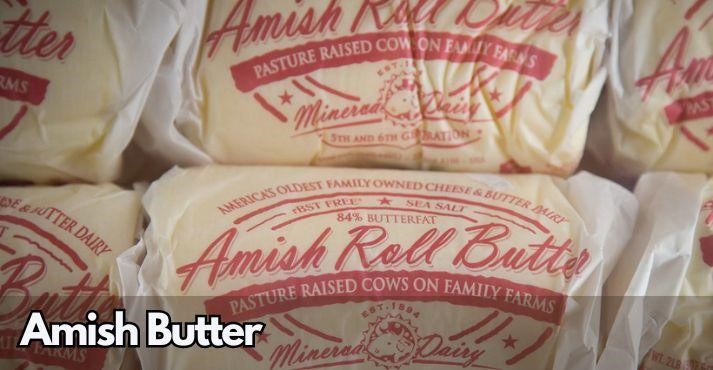
- Color: Light yellow color
- Key Characteristics: Rich flavor and creamy texture, which come from being often churned in small batches
- Uses: Ideal for baking and cooking. It gives bread, pastries, and other baked goods a homemade taste
Amish Butter is traditionally made by the Amish community using a time-honored churning process that develops the butter’s natural flavor and texture. Its richness develops the flavor of cakes and cookies, making them moist and delicious.
When cooking with Amish Butter, its higher fat content allows for a smoother blend into sauces and spreads, enriching the overall taste of savory dishes.
2. Brown Butter (Beurre Noisette)
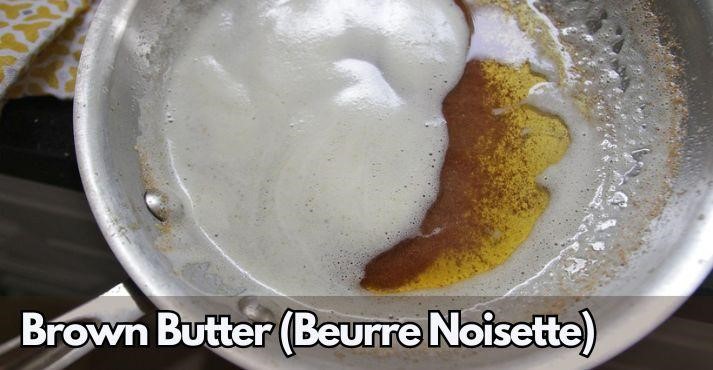
- Color: Deep golden brown
- Key Characteristics: It has a rich, nutty aroma and flavor.
- Uses: It is particularly effective in improving the flavor of sauces, pastries, vegetables, and even meats.
Brown Butter, also known as Beurre Noisette, is a type of butter cooked until the milk solids turn a different color. This butter’s color and taste add a caramel-like richness to various dishes, making it a favorite among chefs for sweet and savory creations.
When making Brown Butter, gently simmering it until it reaches the perfect shade of brown can transform an ordinary dish into something extraordinary with its complex flavors. Its nutty essence brings a sophisticated concentration to simple recipes like cookies and develops complex sauces for pasta and meats.
3. Compound Butter
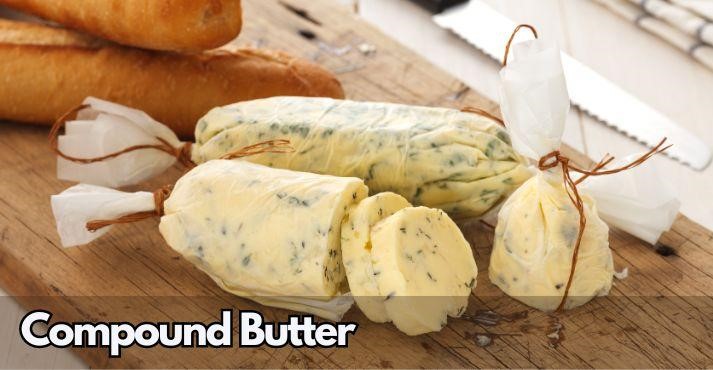
- Color: Vary depending on the added ingredients, i-e, greenish-yellow in the case of herbs
- Key Characteristics: Butter infused with herbs, spices, or other flavors, adding instant taste to any dish
- Uses: It improves the flavor of dishes such as steaks, vegetables, and bread
Compound Butter is made by mixing butter with various herbs, spices, or other flavorings, allowing for a range of flavors from subtle to bold.
This popular butter type is a versatile addition to any kitchen. Compound butter’s key features It can also be used as a simple way to elevate the taste of grilled meats or to add a gourmet touch to homemade bread.
4. Cultured Butter
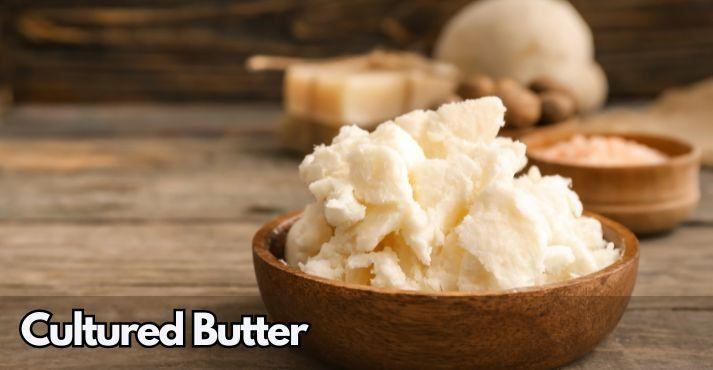
- Color: Pale yellow
- Key Characteristics: The rich texture makes it an excellent choice for those who enjoy a hint of tanginess in their butter.
- Uses: It is particularly suitable for enhancing the taste of fresh bread, pastries, and even cooked vegetables, where its flavor can stand out or complement other ingredients.
Cultured Butter is a type of butter known for its production process, which involves fermenting cream before churning, giving it a distinctive tangy taste. Cultured Butter has a smooth texture and slight tanginess from the fermentation process. This butter spreads beautifully on bread and can be used in cooking to add depth to flavors in baked goods and main dishes.
You can learn about the nuances of cultured dairy products by reading about the cultured milk market.
5. European Butter
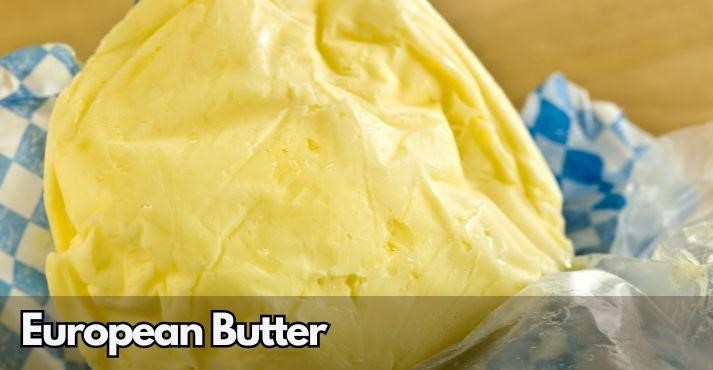
- Color: Rich yellow
- Key Characteristics: Luxurious mouthfeel and a buttery taste that enhances everything from sauces to desserts.
- Uses: Focused on high-fat content baking like puff pastry
European Butter is renowned for its higher fat content, typically around 82% to 86%, which gives it a richer flavor and a creamy, melt-in-your-mouth texture.
European Butter is the best butter for baking goods like croissants, pastries, and bread, where its superior flavor and creamy texture can shine. When baking with European Butter, its higher fat content results in flakier pastries and more tender cakes, making it a favorite among professional bakers and pastry chefs.
6. Ghee (Clarified Butter)
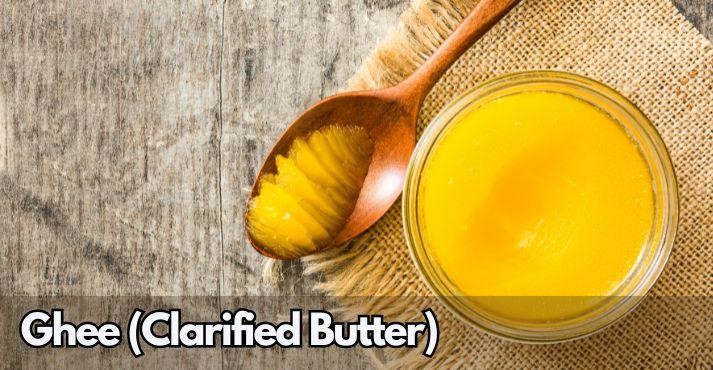
- Color: Bright gold
- Key Characteristics: High smoke point
- Uses: In rich buttery cuisines like qorma and Indian gravies
Ghee, known as Clarified Butter, is a staple in many culinary traditions. It is known for its nutty flavor. It is made by simmering butter to remove the milk solids and is used at higher cooking temperatures without burning.
Ghee’s characteristics include its ability to withstand high-heat cooking, making it ideal for frying and sautéing. It adds a rich, buttery flavor to dishes without the risk of burning, which is especially useful in recipes that require a bold butter taste without dairy solids.
Ghee is the perfect butter for cooking traditional Indian dishes, making popcorn, or even as a healthier alternative to cooking oils.
7. Goat Butter
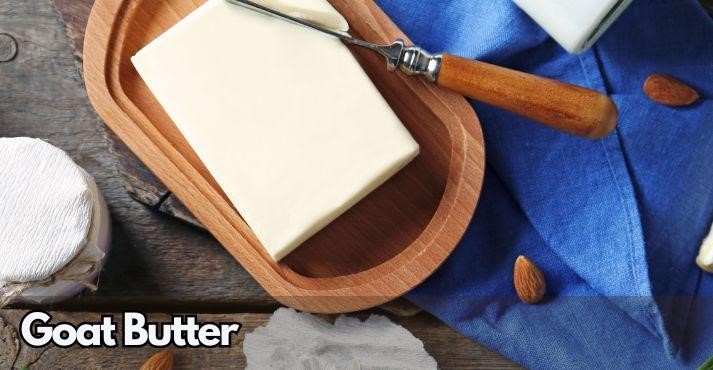
- Color: White to pale yellow
- Key Characteristics: Soft texture and a tangy taste that adds a unique twist to culinary creations
- Uses: Used in baking and cooking where a distinctive flavor is desired, such as cakes, tarts, and sauces.
Goat Butter is a less common type of butter but a flavorful alternative to traditional cow’s butter. It is made from goat’s milk. This butter is known for its slightly tangy flavor, similar to goat cheese.
Goat butter is also appreciated for its nutritional benefits, including being more digestible for some people than cow’s butter. Its unique taste makes it a favorite for spreading on artisan bread or for blending into sauces that benefit from a slight tanginess.
8. Grass-Fed Butter
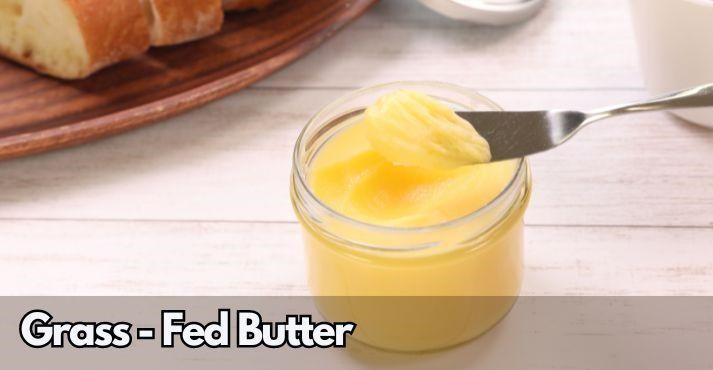
- Color: Deep yellow color
- Key Characteristics: Rich, robust flavor that can enhance any dish, from baked goods to sauces and meats.
- Uses: Healthier and more flavorful choice for cooking and baking.
Grass-fed butter is produced from cows’ milk that grazes on grass. It is rich in nutrients and flavor and has a higher vitamin and omega-3 fatty acid content.
Grass-fed butter is known for its noticeable depth of flavor and a higher concentration of nutrients, such as omega-3 fatty acids and vitamins A and K2.
Although grass-fed butter is not among the most famous butter products, it is known to add a luxurious touch to simple vegetables, boost the taste of grilled steaks, and make your morning toast or pancakes extraordinary.
9. Honey Butter
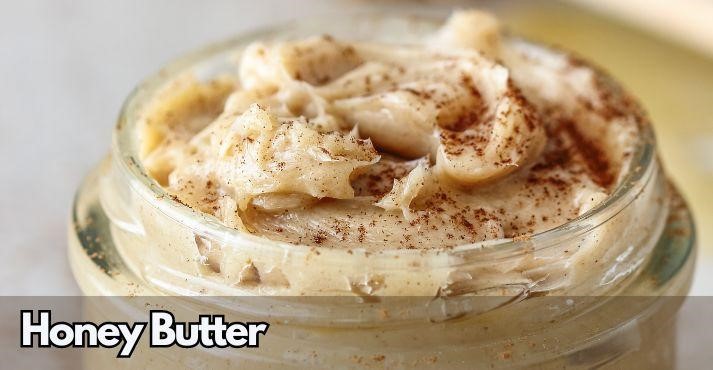
- Color: Pale yellow to golden hue
- Key Characteristics: Combination of butter and honey, creating a sweet and creamy spread
- Uses: Perfect for spreading on warm bread, pancakes, muffins, and other breakfast dishes
Honey Butter is known for its sweet flavor and creamy consistency. It can transform plain toast into a delectable treat and is a great addition to any breakfast or brunch table.
It can also be used to sweeten up savory dishes like roasted carrots or sweet potatoes, adding a hint of sweetness that complements the vegetables’ natural flavors. The honey market article offers further reading on combining sweet and savory flavors.
10. Margarine
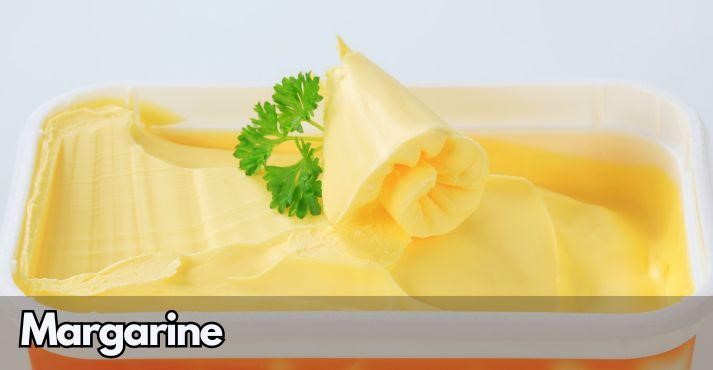
- Color: Pale yellow to deep yellow
- Key Characteristics: Quickly spreadable and low saturated fat content
- Uses: Often used in recipes as a substitute for butter, especially for those looking to reduce their intake of animal fats or who have dietary restrictions.
Margarine is a butter substitute made from vegetable oils and is often chosen for its versatility and lower saturated fat content.
This type of butter’s qualities include its plant-based origin and its use as a spread, baking, and cooking ingredient. Margarine can be used in cakes, cookies, and other baked goods and in cooking applications like sautéing and grilling.
While Margarine does not have the same flavor profile as butter, it can be a good alternative for those who prefer a plant-based option.
The differences and benefits of plant-based diets can be further explored in the article on plant-based protein.
11. Organic Butter
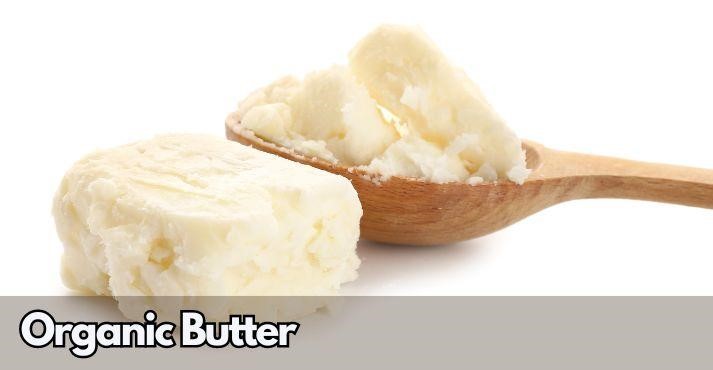
- Color: Pale yellow color
- Key Characteristics: Clean, pure flavor it brings to dishes due to natural production methods
- Uses: Used in a variety of dishes, from baking and cooking to spreading on fresh bread.
Organic Butter is made from the milk of cows fed organic feed and raised without the use of synthetic hormones or pesticides. It adheres to organic farming standards, which ensures that it is free from synthetic additives and richer in natural flavor.
Its benefits include a cleaner flavor profile and the peace of mind that comes from using a product that is produced responsibly and sustainably.
This butter type is prevalent among health-conscious consumers who prefer ingredients that support environmental and animal welfare.
12. Plant-Based Butter
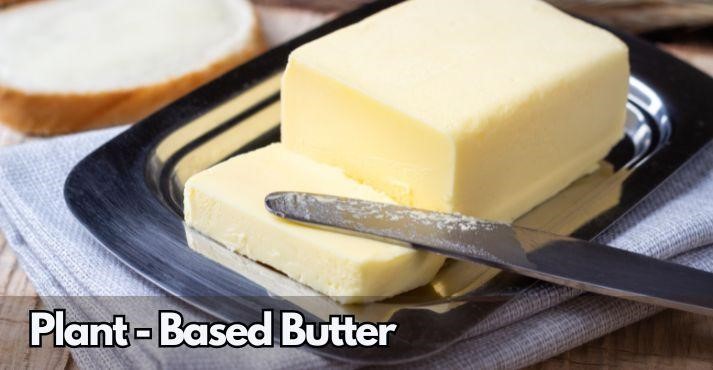
- Color: Pale yellow color
- Key Characteristics: Dairy-free and vegan food item
- Uses: Used in vegan baking and meals
Plant-based butter is a dairy-free alternative designed to mimic the taste and texture of traditional butter without using animal products. This butter is made from a blend of vegetable oils.
Plant-based butter is versatile and can be used in baking, cooking, and as a spread, just like dairy butter. This popular butter type is ideal for those who want to enjoy butter’s creamy texture and flavor without the dairy.
It can be used in vegan baking to create delicious cakes and cookies, and it works well in cooking, providing a buttery flavor to dishes without any animal ingredients.
13. Salted Butter
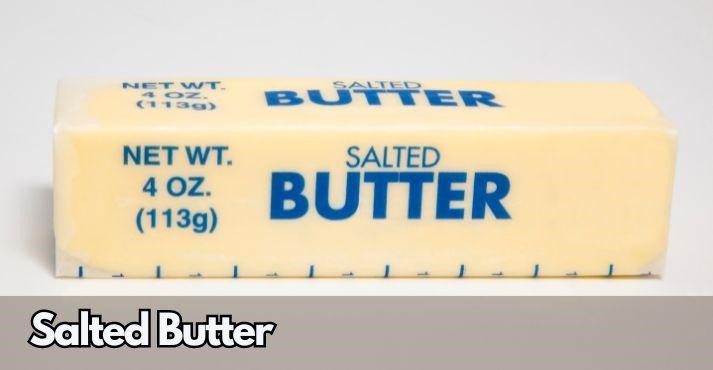
- Color: Pale yellow color
- Key Characteristics: An edgy salty taste
- Uses: Perfect for use in dishes where a salty edge can improve taste like sauteed vegetables
Salted Butter is a classic type of butter used for cooking, baking, and spreading. It is known for the salt added to enhance its flavor and extend its shelf life. Salted Butter is familiar to most, and its enhanced taste makes it a favorite for many culinary applications.
Salted Butter includes added salt, which preserves the butter and boosts its flavor. This makes it Salted Butter is often used on fresh bread, in cooking to season vegetables and meats, and in baking where the recipe calls for a salty contrast to sweet flavors.
It is a versatile dairy butter that can be used in nearly any dish, providing a reliable and delicious base for increasing flavor. To understand more about this ever-popular dairy product and the sector that produces it for us, read this blog post on trends in the dairy sector.
14. Smen Butter
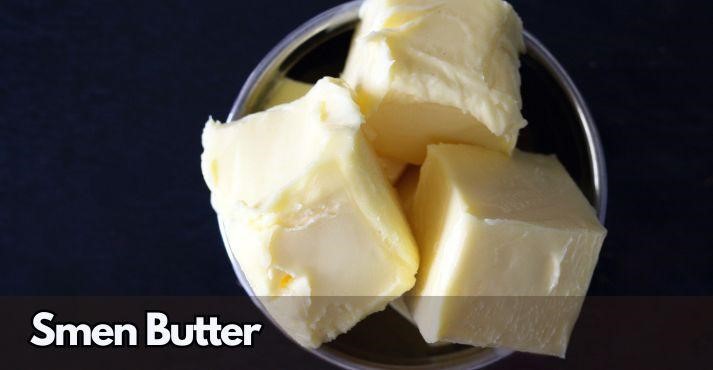
- Color: White color
- Key Characteristics: Creamy texture with intense taste
- Uses: North-African cuisine
Smen Butter is a traditional North African fermented butter known for its unique flavor and aroma, which is derived from the fermentation process.
The critical characteristic of Smen Butter is its robust and tangy flavor akin to blue cheese, making it a distinctive addition to many dishes. Smen Butter is used in various North African recipes, from couscous to tagines, where it adds an extent of flavor that is hard to replicate with other types of butter.
Its fermented nature makes it a fascinating ingredient for culinary experimentation. It adds a cultured dimension to sauces and meats that require a bold flavor profile. Check out this international food show to learn more about global food and beverage trends.
15. Spreadable Butter
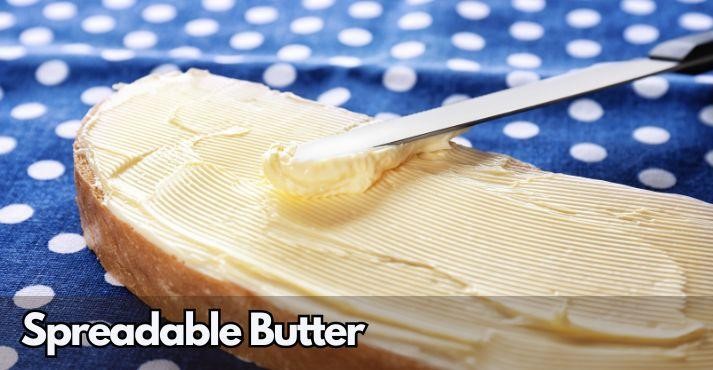
- Color: Pale yellow
- Key Characteristics: Convenient spreadable texture
- Uses: Quick spread for baked goods
Thanks to the blend of butter and vegetable oil, spreadable Butter is designed to be soft and easy to spread, even when cold.
Spreadable Butter includes its softness and the ease with which it can be spread on bread, toast, and other foods without tearing them.
Spreadable Butter is perfect for those who want the flavor of butter without the hassle of waiting for it to soften. It can quickly top fresh bread, rolls, and baked goods, providing the rich taste of butter right out of the refrigerator.
16. Sweet Cream Butter
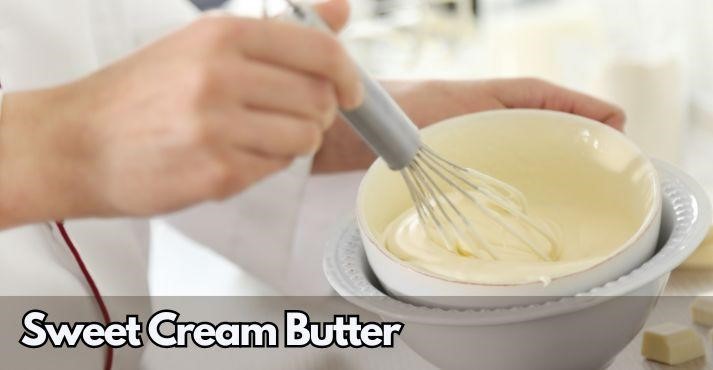
- Color: Pale yellow
- Key Characteristics: Subtle sweet taste without overpowering
- Uses: In cooking and baking, to add a slightly sweet edge
Sweet Cream Butter is one of the most common types of butter. It is made from fresh cream and is known for its mild flavor and versatility.
The Sweet Cream Butter’s pure, sweet cream flavor and smooth texture make it ideal for all kinds of cooking and baking. It can be used to make flaky pastries, rich sauces, and creamy soups. It is also perfect for spreading on fresh bread or melting vegetables.
Its mild flavor enhances the ingredients rather than overpowers them, making it a favorite for those who appreciate the subtlety of high-quality butter.
17. Unsalted Butter

- Color: Light yellow
- Key Characteristics: Unseasoned to help in seasoning dishes as per choices
- Uses: In cooking and baking where salt content needs to be measured precisely
Unsalted Butter is one of the best butter for baking and cooking because of its pure, sweet cream flavor and control over dish seasoning.
Its pale yellow color is similar to that of other types of butter, but without the added salt, it allows chefs and home cooks alike to season their dishes precisely to their taste.
Unsalted Butter’s qualities include its versatility and its use in sweet and savory dishes alike. It is essential in baking, as it contributes to the texture and flavor of cakes, cookies, and pastries without adding unwanted saltiness.
It is also used in cooking to create balanced, flavorful sauces and to sauté vegetables where the ingredients’ natural flavors are preferred to shine.
18. Whipped Butter
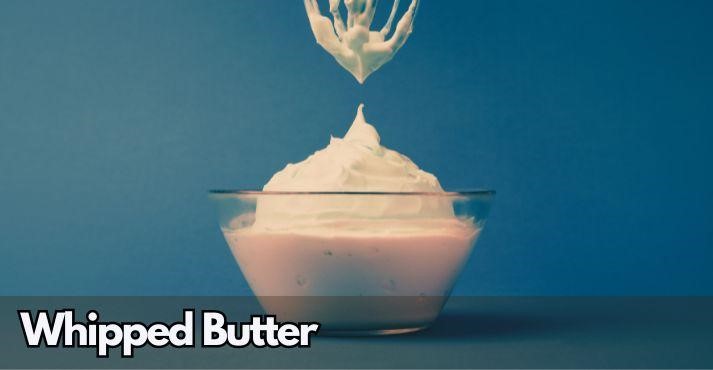
- Color: Pale yellow towards white
- Key Characteristics: Fluffy texture
- Uses: In cooking and baking for quick melting without the usual heavy density
Whipped Butter is butter that has been aerated with air or nitrogen to create a light, fluffy texture that spreads quickly. Its pale yellow color and airy consistency make it a delight on warm bread, muffins, and pancakes.
The critical characteristics of Whipped Butter include its lightness and the way it melts quickly on hot surfaces, providing the flavor of butter without the density.
Whipped Butter is not recommended for baking due to its altered density, but it is perfect for spreading on fresh bread and rolls, topping hot vegetables, and boosting the flavor of breakfast dishes.
Its fluffy texture also makes it a fun addition to sweet treats like waffles and French toast, where it can be paired with syrup or fruit for a delicious combination, and it is a popular type of butter amongst young households with children.
Choosing the Right Butter
When selecting the suitable types of butter for your cooking needs, consider the flavor and the cooking method you’ll be using:
- Baking: Unsalted Butter is usually the best choice for baking, as it allows you to control the exact amount of salt in your recipes, ensuring that your baked goods turn out perfectly balanced every time.
- Savory Cooking: Salted butter or European butter can enrich the flavors of meats and vegetables, adding depth and richness to dishes.
- High-Heat Cooking: Ghee (clarified butter) is excellent for cooking at high temperatures, such as when frying or sautéing, because of its high smoke point, which prevents burning.
- Spreading: Whipped Butter or Spreadable Butter is ideal for an easy-to-spread option, as they stay soft and are easy to apply to your favorite bread or toast.
Types of Butter (FAQs)
How do we know if butter has gone wrong?
Butter that has gone bad will have a sour smell and a discolored appearance and might even show signs of mold. If your butter smells off or looks unusual, it’s best to discard it to avoid any foodborne illnesses.
What is butter made out of?
Butter is primarily made from fat and protein components of milk or cream. When milk or cream is churned, the butterfat separates from the liquid buttermilk, resulting in the solid butter that we use in cooking and baking.
Which butter is used for cooking?
Unsalted Butter is often preferred for general cooking because it allows the chef to control the dish’s seasoning. Ghee or Clarified Butter is used for high-heat cooking due to its higher smoke point, which prevents burning and ensures a clean, rich flavor.
Conclusion
Understanding the different types of butter and their unique qualities can significantly enhance your cooking and baking skills. From the handcrafted richness of Amish butter to the health benefits of grass-fed butter, each type of butter brings something unique to the table.
Plant-based butter offers a fantastic alternative for those with dietary restrictions, ensuring everyone can enjoy the creamy goodness of butter in their meals. Choosing the best butter for your culinary needs will add new flavors and textures to your dishes, making every meal a delightful experience.
Explore these popular butter types to become a more versatile cook and bring a touch of gourmet flair to your kitchen.





























